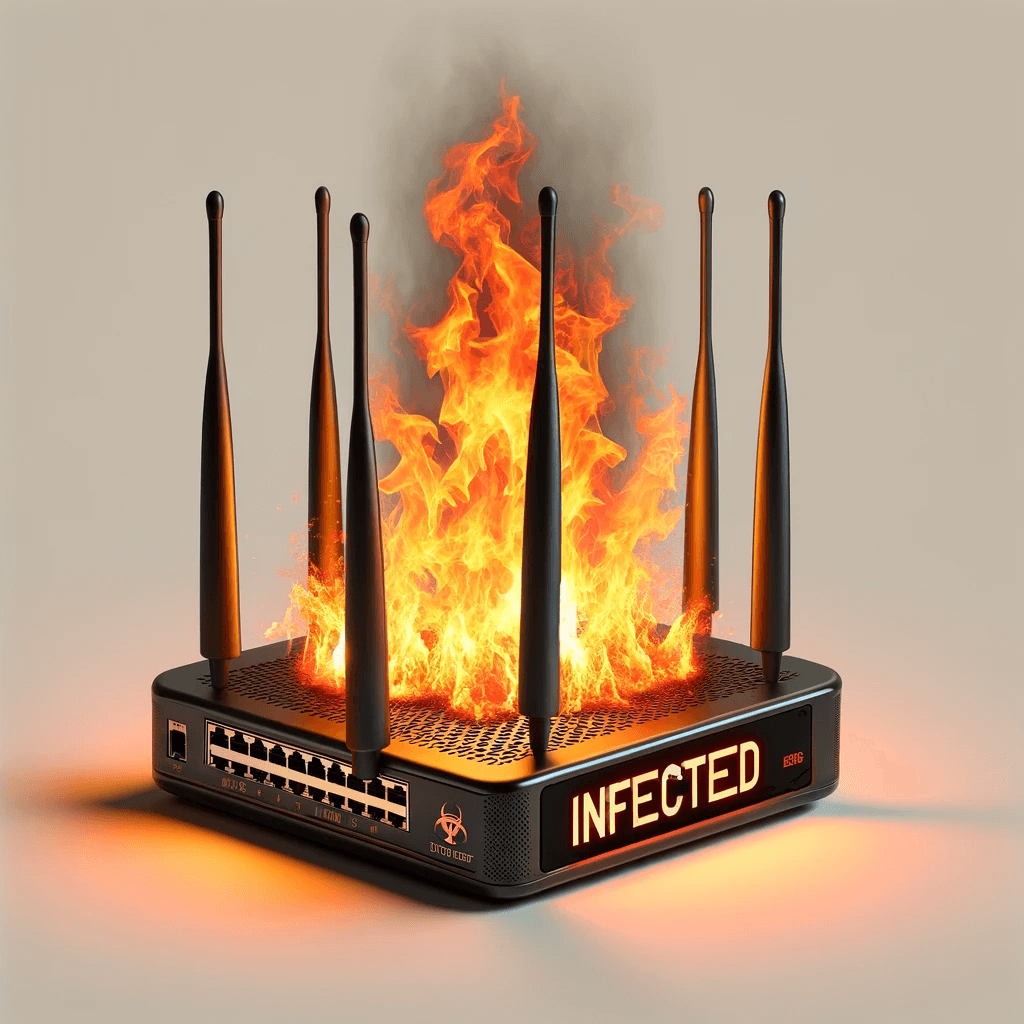Posted: Wednesday, November 29, 2023
Word Count: 605
Reading Time: 3 minutes
In the ever-evolving landscape of cybersecurity, the recent discovery of the InfectedSlurs botnet poses new challenges. This Mirai-based botnet exploits zero-day vulnerabilities in routers and Network Video Recorder (NVR) devices, leveraging them to launch distributed denial-of-service (DDoS) attacks. Understanding the nature of this vulnerability, its impact, and the protective measures is crucial for maintaining network security.

1.Understanding the Vulnerability
The InfectedSlurs botnet utilizes two zero-day remote code execution (RCE) vulnerabilities. These vulnerabilities are exploited primarily when devices retain default admin credentials, a common oversight in network security. The botnet was first spotted by Akamai’s security intelligence response team (SIRT) in late 2023, with its activity tracing back to late 2022. It targets specific devices linked to an unnamed NVR manufacturer and a popular wireless LAN router, used predominantly in homes and hotels.
2. Impact of the Vulnerability
The exploitation of these vulnerabilities by the InfectedSlurs botnet poses significant risks. It enables unauthorized access and control over the affected devices, turning them into part of a DDoS swarm. This can lead to compromised network security, data breaches, and severe disruptions in network services.
3. Why Specific Router Models Weren’t Identified
In the realm of cybersecurity, responsible disclosure is a critical practice. In this case, the details of the affected devices, including model numbers and manufacturers, have not been publicly disclosed to prevent further exploitation. This approach allows manufacturers time to develop and release security patches without exposing them to malicious actors. Akamai, along with other cybersecurity entities, has withheld specific details until patches are released and the risk of exploitation is mitigated.
4. Protecting Against the Vulnerability
To safeguard against such vulnerabilities, several measures can be implemented:

- Change Default Credentials: Always change default admin credentials on routers and NVR devices. Use strong, unique passwords to prevent unauthorized access.
- Regular Updates and Patches: Regularly update the firmware and software of your devices. Once patches for these vulnerabilities are released, apply them promptly.
- Network Monitoring: Vigilantly monitor network traffic for signs of unusual activities. This can help in early detection of a potential infection.
- Device Isolation: If possible, isolate devices that are vulnerable or yet to be patched in a separate network segment. This limits the potential spread of any infection.
- Reboot Devices: Since InfectedSlurs does not have a persistence mechanism, rebooting devices can temporarily disrupt the botnet’s operation.
- Security Awareness: Stay informed about the latest security threats and best practices. Monitor advisories from vendors and cybersecurity entities for the latest updates.
- Firewalls and Intrusion Detection Systems: Implement robust firewalls and intrusion detection/prevention systems. These tools can help block unauthorized access and detect signs of compromise.
5.0 That’s a Wrap
For the typical consumer, the best way to protect against this exploit is to ensure that you are not using the default administrator password. In many cases, equipment that is rented out to you by your internet service provider leverages the serial number as your default admin password. Those devices are less of a concern; however, it wouldn’t necessarily hurt to reset the password if you believe it would giive you piece of mind. Also, check to see if you routers firmware is up to date. Also, rebooting your networking equipment on a regular cadence will at least disrupt the botnet.
The discovery of the InfectedSlurs botnet underscores the importance of proactive security measures in the face of emerging cyber threats. By staying vigilant, regularly updating systems, and following best practices in network security, organizations and individuals can significantly reduce their vulnerability to such attacks. The collaborative efforts in responsible disclosure, timely patching by manufacturers, and informed actions by users play a pivotal role in defending against these and future cybersecurity challenges.